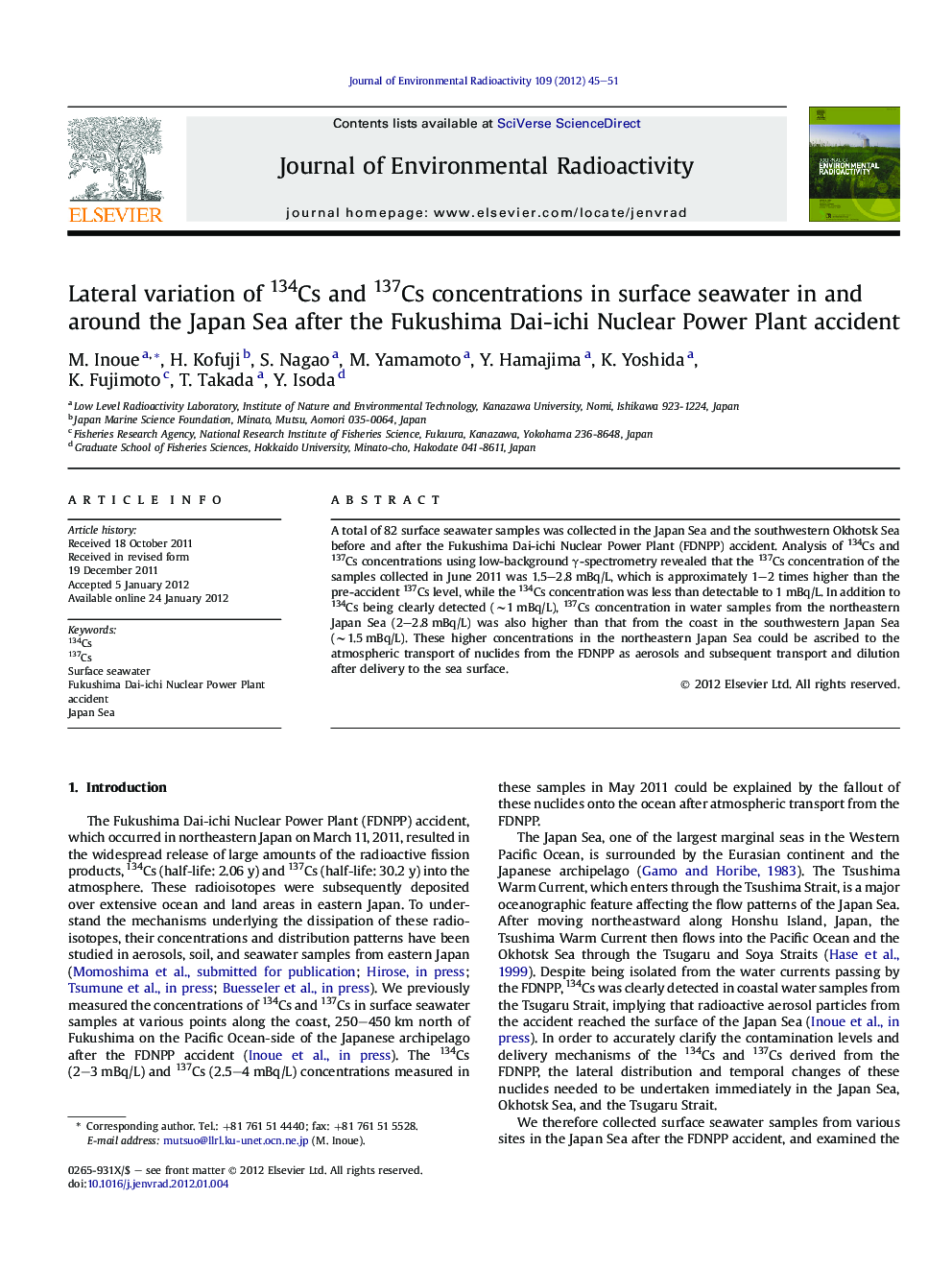| Article ID | Journal | Published Year | Pages | File Type |
|---|---|---|---|---|
| 1738456 | Journal of Environmental Radioactivity | 2012 | 7 Pages |
A total of 82 surface seawater samples was collected in the Japan Sea and the southwestern Okhotsk Sea before and after the Fukushima Dai-ichi Nuclear Power Plant (FDNPP) accident. Analysis of 134Cs and 137Cs concentrations using low-background γ-spectrometry revealed that the 137Cs concentration of the samples collected in June 2011 was 1.5–2.8 mBq/L, which is approximately 1–2 times higher than the pre-accident 137Cs level, while the 134Cs concentration was less than detectable to 1 mBq/L. In addition to 134Cs being clearly detected (∼1 mBq/L), 137Cs concentration in water samples from the northeastern Japan Sea (2–2.8 mBq/L) was also higher than that from the coast in the southwestern Japan Sea (∼1.5 mBq/L). These higher concentrations in the northeastern Japan Sea could be ascribed to the atmospheric transport of nuclides from the FDNPP as aerosols and subsequent transport and dilution after delivery to the sea surface.
► Seawater samples were collected in and around the Japan Sea in June 2011. ► 134Cs and 137Cs concentrations were n.d.–1 mBq/L and 1.5–3 mBq/L, respectively. ► 134Cs and 137Cs concentrations gradually increased from west to east in the Japan Sea. ► 134Cs and 137Cs were delivered to sea surface by atmospheric particles.
